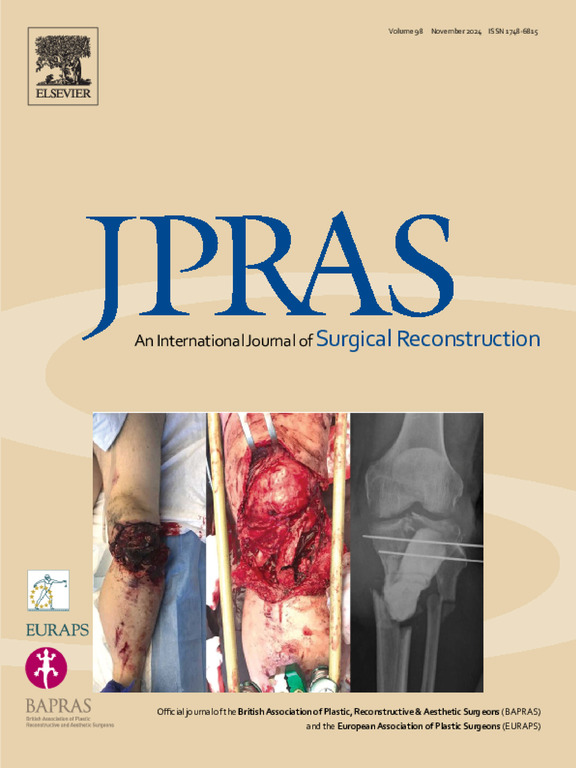FACE-Q craniofacial module: Normative data from a Dutch population in adolescence and young adulthood
IF 2.4
3区 医学
Q2 SURGERY
Journal of Plastic Reconstructive and Aesthetic Surgery
Pub Date : 2025-08-20
DOI:10.1016/j.bjps.2025.08.017
引用次数: 0
Abstract
Background
The FACE-Q Craniofacial Module is a patient-reported outcome measure (PROM) that has undergone rigorous psychometric validation in patients with visible or functional facial differences, including patients with craniosynostosis. Normative data for the FACE-Q Craniofacial Module scales are currently unavailable for unaffected controls. This study aims to collect and analyze normative FACE-Q Craniofacial Module data from a Dutch population sample.
Method
Dutch nationals aged 16–24 years without visible or functional facial differences were recruited by a third-party company for the online survey. Respondents completed FACE-Q Craniofacial Module scales from the appearance and health-related quality of life domains. Normative data were calculated as means and standard deviations and weighted based on national data.
Results
A total of 870 individuals responded to the survey, of which 160 were excluded from the analysis because of possible visible or functional facial differences. Women had significantly lower scores on many scales. Age influenced the scores for the face, forehead, head shape, and appearance distress scales significantly, with higher scores as age increases. Participants with a practical background only had significantly lower scores on the school functioning scale.
Conclusion
Normative values for FACE-Q Craniofacial Module scales are provided derived from a Dutch sample of adolescents and young adults. This study demonstrates that sex and age had a significant influence on multiple FACE-Q scales. These normative values provide more context when interpreting FACE-Q scores in patients with visible or functional facial differences.
FACE-Q颅面模块:来自荷兰青少年和青年的标准数据
FACE-Q颅面模块是一种患者报告的结果测量(PROM),在有明显或功能性面部差异的患者(包括颅缝闭闭患者)中进行了严格的心理测量验证。FACE-Q颅面模块量表的标准数据目前无法用于未受影响的对照组。本研究旨在收集和分析来自荷兰人口样本的规范FACE-Q颅面模块数据。方法由第三方公司招募年龄在16-24岁、无明显或功能性面部差异的荷兰人进行在线调查。受访者从外观和健康相关的生活质量领域完成了FACE-Q颅面模块量表。规范性数据以均值和标准差计算,并以国家数据加权。结果共有870人参与了调查,其中160人因可能存在的可见或功能性面部差异而被排除在分析之外。女性在许多方面的得分都明显较低。年龄显著影响面部、前额、头部形状和外貌困扰量表的得分,随着年龄的增长得分越高。具有实践背景的参与者在学校功能量表上的得分明显较低。结论FACE-Q颅面模块量表的标准值来源于荷兰的青少年和年轻人样本。本研究表明,性别和年龄对多个FACE-Q量表有显著影响。这些标准值在解释具有明显或功能性面部差异的患者的FACE-Q评分时提供了更多的背景。
本文章由计算机程序翻译,如有差异,请以英文原文为准。
求助全文
约1分钟内获得全文
求助全文
来源期刊
CiteScore
3.10
自引率
11.10%
发文量
578
审稿时长
3.5 months
期刊介绍:
JPRAS An International Journal of Surgical Reconstruction is one of the world''s leading international journals, covering all the reconstructive and aesthetic aspects of plastic surgery.
The journal presents the latest surgical procedures with audit and outcome studies of new and established techniques in plastic surgery including: cleft lip and palate and other heads and neck surgery, hand surgery, lower limb trauma, burns, skin cancer, breast surgery and aesthetic surgery.

 求助内容:
求助内容: 应助结果提醒方式:
应助结果提醒方式:


